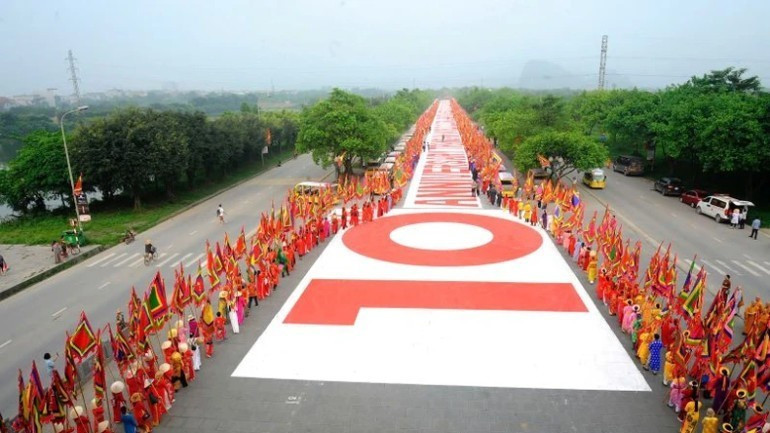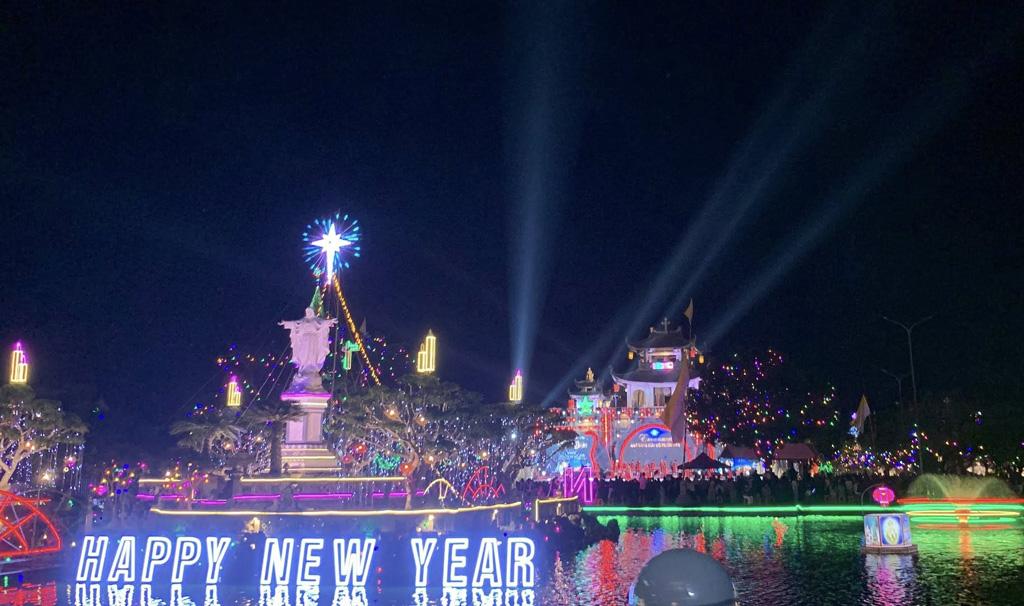International research, coupled with the determination of Ninh Binh Province, is opening up opportunities to realise the vision of building a “Millennial heritage city” in the future.
This is Viet Nam’s first and Southeast Asia’s only World Cultural and Natural Heritage site to hold the status of a “mixed heritage”. Spanning more than 6,000 hectares, the complex encompasses the ancient capital of Hoa Lu, the Trang An Eco-tourism Area, Tam Coc-Bich Dong, and the Hoa Lu Special-use Forest. It brings together rare geological, geomorphological, archaeological, ecological, cultural and historical values.
The uniqueness and global significance of Trang An
Jonathan Baker, UNESCO Chief Representative in Viet Nam, remarked that Trang An is rich in biodiversity and outstanding archaeological value, serving as a vivid testimony to the harmonious relationship between humankind and nature. However, he noted, Ninh Binh also faces the challenge of both safeguarding this global heritage and harnessing it economically in a way that benefits communities and future generations.
Every year, Trang An welcomes more than six million visitors, making a significant contribution to Ninh Binh’s GRDP growth. This “precious gem” has boosted tourism, created tens of thousands of jobs, and improved community livelihoods. The sight of local people rowing boats, developing homestays, and offering tourism services has become a cultural hallmark of the area.
 The ceremony marking the 10th anniversary of Trang An’s recognition by UNESCO as a World Cultural and Natural Heritage site (Photo: Ninh Binh Department of Tourism)
The ceremony marking the 10th anniversary of Trang An’s recognition by UNESCO as a World Cultural and Natural Heritage site (Photo: Ninh Binh Department of Tourism)
Ninh Bình Provincial People’s Committee Chairman Pham Quang Ngoc stated that in the coming period, Ninh Bình tourism will remain committed to the development approach of being “green creative sustainable internationally integrated”. The province aims to receive 30 million visitors by 2030, including four to five million international arrivals, with tourism and the cultural industries contributing around 15% of GRDP.
By 2050, the province aspires to become Asia’s leading cultural tourism creative ecosystem, a UNESCO-recognised global creative city, a venue for international events, and an “outdoor studio” for world cinema.
To achieve these goals, the Provincial Party Committee, People’s Council and People’s Committee are focusing on strategic solutions: developing key infrastructure, including investment in an airport, an international cruise port, a convention centre, and a heritage and creativity park; accelerating digital transformation and building a smart tourism ecosystem; establishing creative hubs, international film studios, and annual cultural artistic events of regional and global stature; and training high-quality human resources aligned with market needs and international integration.
Quantifying tourism value and appeal
A joint study by Viet Nam, Italy and Germany has valued Trang An’s total economic and brand worth at up to 213 billion USD. Of this, about 20 billion USD represents the increased value of buffer-zone land resulting from the heritage designation. This figure underscores that Trang An is not only a cultural and natural treasure but also a “global brand asset” of immense appeal.
Bui Van Manh, Director of the Ninh Binh Department of Tourism, noted: “This is a crucial scientific and practical basis for Ninh Binh to assert its standing on the world tourism map, attracting investment, cooperation and global media attention.” The valuation identified ten outstanding groups of values: leisure, karst, biodiversity, archaeology, special-use forests, temple and pagoda culture, festivals, folk art, and land values in the core and buffer zones. This demonstrates that a heritage-based urban model is entirely feasible, with heritage serving as the cornerstone of urban planning, cultural landscapes and community livelihoods.
In terms of long-term strategy, this economic valuation provides an essential foundation for policymaking from heritage urban spatial planning and sustainable real estate development to enhancing governance capacity, climate change adaptation and international integration. Trang An can become a global model of heritage-based development, strengthening the stature of both Ninh Binh and Viet Nam on the world tourism map.
Notably, the valuation results have been published and acknowledged at international conferences with reputable global partners. This opens opportunities for Trang An and by extension, Ninh Binh to become a hub for exchange, cooperation and knowledge-sharing in heritage conservation and development.
This not only elevates the province’s profile but also enables access to resources, technology and advanced management experience, making the vision of a “Millennial heritage city” a model of deep integration in the era of globalisation. The Trang An brand is positioned on a development model rooted in conservation, with government, businesses and communities working hand in hand to preserve heritage while making effective use of it.
Following its merger with Ha Nam and Nam Dinh, the (new) Ninh Binh Province has become the southern gateway to the Red River Delta, pooling strong resources in infrastructure, economy and population. Within this development framework, Trang An continues to play the central role as the symbol of the “Millennial heritage city” the province aspires to build.
With strategic vision, coordinated efforts from the political system, communities and businesses, and the area’s unique heritage values, Trang An will continue to convey a powerful message: green, sustainable and harmonious development, for a prosperous, civilised and modern Ninh Binh reaching out to the world.
